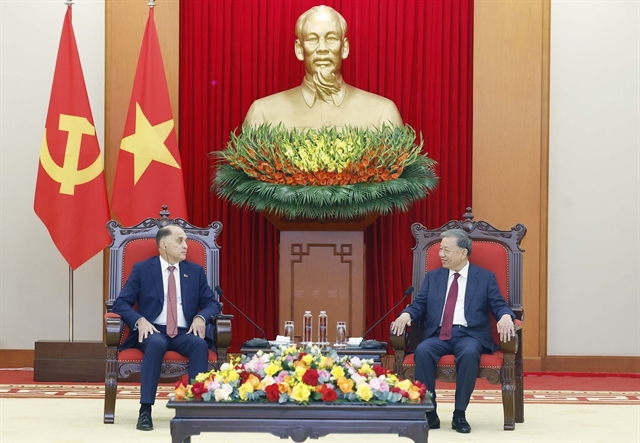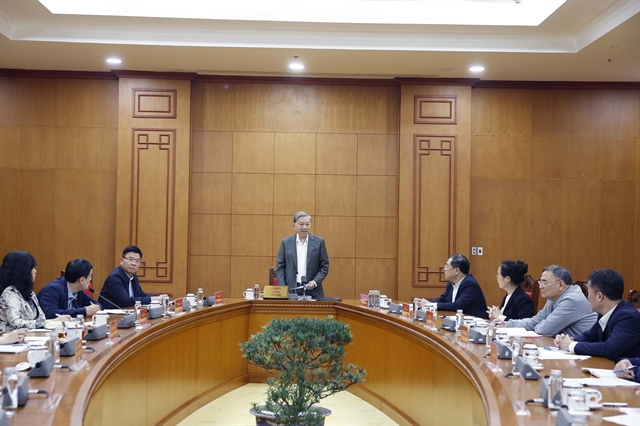 Society
Society
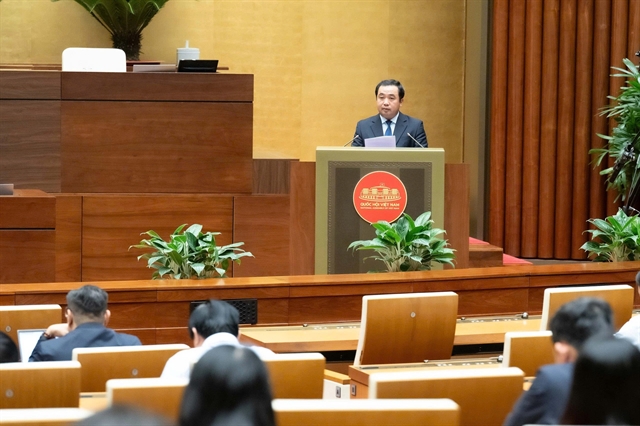
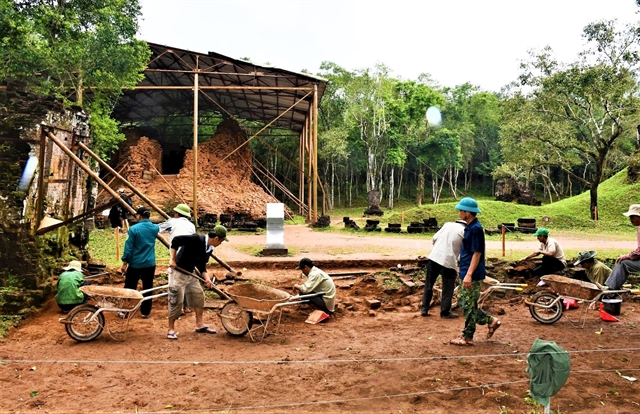 |
| Workers renovate at the renovation site within the Mỹ Sơn Temple Complex. — Photos daidoanket.vn |
QUẢNG NAM — Over the past days, dedicated teams have been working tirelessly to finalise the preservation and restoration plans for the Mỹ Sơn Temple Complex, a special national monument in Quảng Nam Province. This remarkable site, known for its rich history and stunning architecture, is undergoing a renaissance.
Following the successful revival of several ancient tower groups, including H, K, and A, Indian experts have now turned their attention to the last abandoned groups, E and F. Their mission is to breathe new life into these structures and complete the restoration of the Mỹ Sơn World Cultural Heritage site.
Guided by the experienced Indian specialists, over 20 skilled workers are meticulously cleaning, clearing and scientifically analysing the areas surrounding groups E and F. Drawing from their experiences in previous restorations, the team collaborates seamlessly with the experts, ensuring every detail is addressed.
The Management Board of Mỹ Sơn Cultural Heritage reported that the E and F towers are situated close to each other. The F tower group consists of three structures: F1, F2, and F3. Sadly, F3 has collapsed, its location now only marked on diagrams due to bomb damage during the war. Meanwhile, F1 and F2 are also in a distressing condition. The F2 gate tower has partially crumbled, leaving a leaning 3.2m wall riddled with deep cracks. The northern wall still stands, but both are propped up by iron bars, a precarious situation.
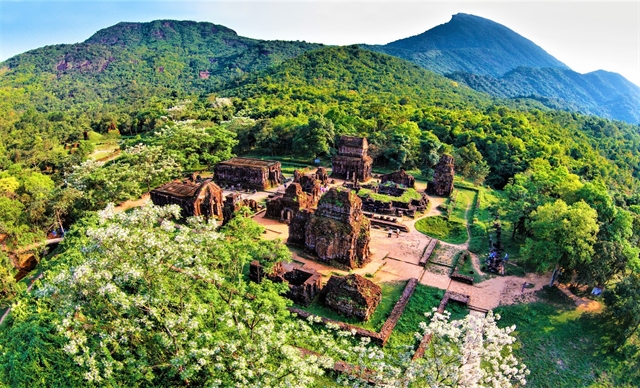 |
| A corner of Mỹ Sơn Temple Complex seen from above. |
Particularly concerning is the F1 tower. Excavated in 2003, it has remained untouched since, with its surface now overgrown. The walls, marked by numerous cracks and dotted with pale bricks, face imminent danger of collapse without prompt restoration.
Notably, the F tower group is one of the earliest architectural complexes dedicated to Shiva worship, dating back to the 7th to 11th centuries. It stands as a testament to the evolution of architecture and artistic sculpture in the Mỹ Sơn Temple Complex, and more broadly, the Champa civilisation.
Turning to Tower Group E, E1 serves as the centrepiece, hailing from the 8th century and representing the earliest surviving relic of the area. While E7 was restored between 2011 and 2013, the majority of the structures in Group E are now mere ruins.
The Director of the Mỹ Sơn Cultural Heritage Management Board, Nguyễn Công Khiết, announced that the restoration project for the E and F tower groups will officially begin in May and continue until 2029, backed by a generous US$4.8 million donation in non-refundable aid from the Indian Government. The restoration will focus on reinforcing and preserving the original elements, ensuring accuracy and integrity.
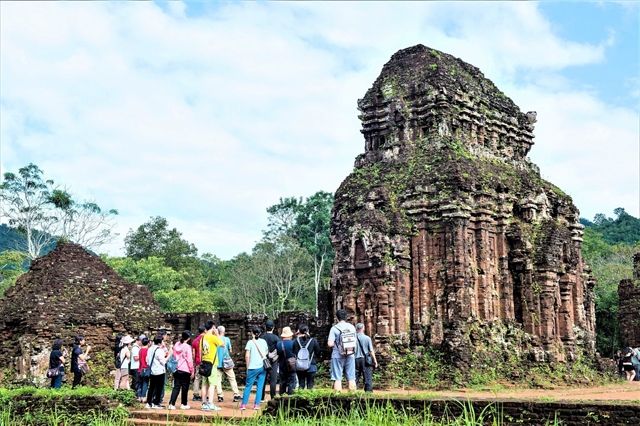 |
| Tourists visit the Mỹ Sơn Temple Complex. |
Khiết emphasised the historical significance of the F tower group, regarded by experts as one of the largest complexes within the Mỹ Sơn sanctuary. Unfortunately, decades of conflict have left many towers in ruins.
"Tower F1 is the main temple area and holds paramount importance. Although it was excavated in 2003, no restoration efforts have been made, leaving it vulnerable under a makeshift corrugated iron roof. If not addressed soon, Tower F1 is at risk of landslides during the upcoming storms," he cautioned.
Khiết firmly believes that the successful conservation of Towers E and F will play a crucial role in revitalising the entire site. Visitors to Mỹ Sơn will have the unique opportunity to witness the restoration of one of humanity's treasured examples of spiritual architecture.
"If we successfully restore tower groups E and F, we will maximise their heritage value and revive their long-standing historical significance. This will also expand tourism opportunities, enticing more travellers to explore Mỹ Sơn. Thus, the urgency of this restoration project cannot be overstated," Khiết affirmed.
The Director of the Archaeological Survey of India, Shri Azmira Bhima, expressed optimism that the conservation efforts will not only address the damage and degradation but also enhance the architectural integrity of the Mỹ Sơn Temple Complex - a true gem of world cultural heritage. Moreover, these efforts will bolster the skills and professional capacity of local staff, fostering a skilled workforce dedicated to heritage conservation. The tangible outcome of these projects will be the enduring strength of the temple towers within the sanctuary. VNS

